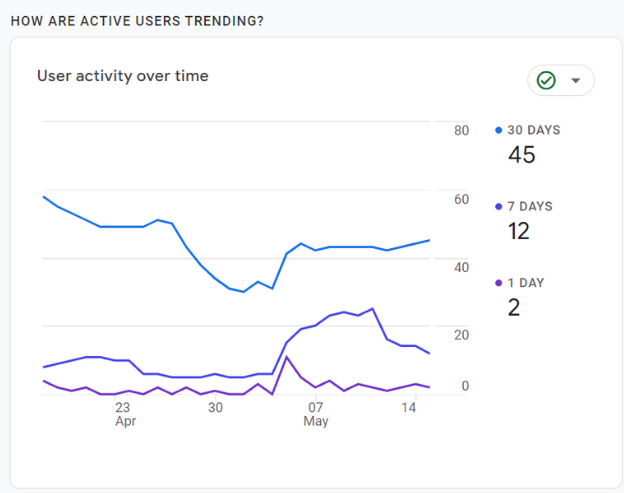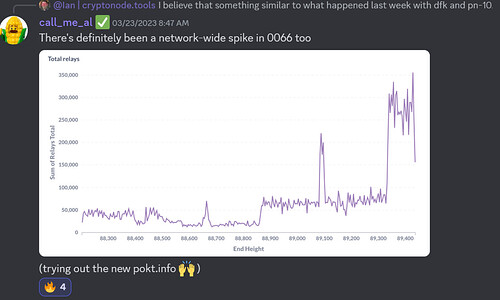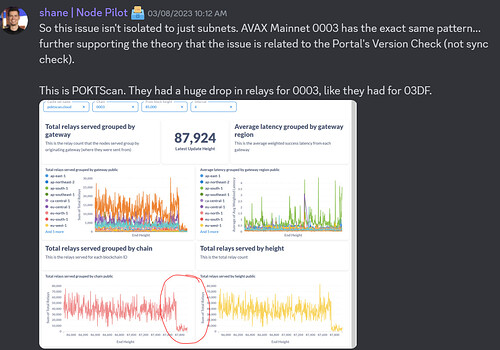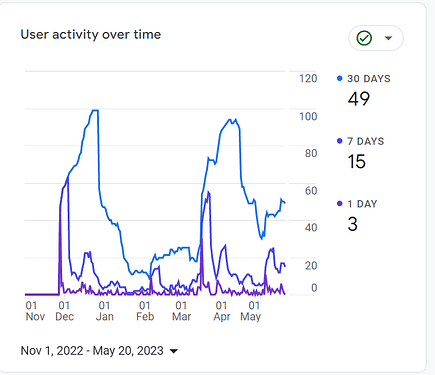Attributes
- Author(s): Thunderhead
- Recipient(s): Thunderhead
- Category: Reimbursement
- Asking Amount: The POKT equivalent to USD $75,000 to cover development costs and initial maintenance.
Summary
POKT.info (PI) is a comprehensive analytics tool for node runners in the pocket network ecosystem. It allows node-runners to take advantage of granular, real-time data to improve the overall QoS of Pocket Network. POKT.info (PI) gives all node runners, small and large, the ability to optimize and maximize their individual nodes, in turn benefiting the network.
At Thunderhead we believe that providing intricate, accurate data, software tooling and infrastructure to the community is essential for advancing Pocket’s growth and promoting collaboration. By sharing resources and information, community members can build upon each other’s work and create new tools for the greater good of the network.
In short, P.I enables nodes that make up the network to be:
- More competitive
- Able to deliver much better QoS to the network as a whole.
- More efficient as node operators can easily find improvements.
At its core, P.I encourages the network to optimize itself - as the transparency granular data brings is a huge boon to node runners who want to figure out how they can be more efficient.
The P.I dashboard is for users and node runners to find granular data to optimize their own activities, as well as measure how they are doing compared to the network as a whole. For example, users can see where specific errors are coming from within specific cache sets to test if competitors are seeing the same errors.
These allow for an enormously powerful representation of data not found anywhere else, so by making this resource and the data within widely available, community members and researchers can work together to solve some of the complex problems POKT will face in the future.
Motivation/Rationale
PI improves the quality of service of the POKT network overall while reducing monopoly on more detailed, granular data like errors, allowing new entrants to the network to be more efficient and faster. PI also illuminates the inputs to the opaque cherry picker, which has historically confused the network’s node runners.
Additionally, PNI were paying ~$50k per month for Datadog to visualize a fraction of PI’s current features. This is $600k per year. PoktInfo is an open-source, community-ran alternative to this at a small fraction of the cost.
As far as users go, the site has 45 monthly active users, demonstrating that this is a popular tool amongst the small node runner population.

Many in the community have found it useful as well:
Dave from Knowable VC said ‘pokt.info was massively helpful for us when standing up node… good for both pre/during node setup and then afterwards long term to try tweak node performance.’
Additional snippets of community members discussing POKT.info in public channels are included below.
Please see our supplementary PNF impact scorecard as well: https://docs.google.com/spreadsheets/d/1NzGcEPgdHx3BaZuv59AirW7SJrBcsLtMmDF-hXp0XFE/edit#gid=1798241717
Our cost incurred exceeds how much we are asking for (a year of work for one experienced SWE + not inexpensive infrastructure requirements). We are asking for 60% of our actual costs, as we do believe in the long-term value of the project.
Intended Outcomes
The streamlining of node troubleshooting, an increase in clarity around network data, and the improvement in the overall QoS of the Pocket Network.
Since release, the POKT.info team has provided support, corrected bugs, and added new features to the product. Thunderhead intends to continue to enhance and support the code beyond this proposal.
Deliverable(s)
We delivered an open-source, comprehensive, and hosted dashboard to the node-running community.
Timeline
- Idea, R&D, development & testing: (August 2022 - Present)
- Beta release (November 28th, 2022)
- Feature overhaul (March 17th, 2023)
- Community feedback, collaboration, & bug fixes: (November 28th, 2022 - to date).
Items
- Comprehensive dashboard with a page for reward, latency, relays, errors, and location information, each filterable by every domain, chain, region. (See Appendix for full feature list)
- All services open sourced with documentation detailing setup/install, architecture, and flow
- Maintained public hosted instance of POKT.info and answered all relevant questions/feedback.
Community mentions:
See how various community members have used POKT.info in the discord channels below.
Al uses Pokt Info to analyze unusual Arbitrum Traffic

Ming recommends user discussing Celo latency to check it on Pokt.info
Ian observes that it is often difficult to understand why the cherrypicker behaves how it does, and how he uses Pokt.info to help make this more transparent, as DataDog is no longer around.
Shane uses pokt.info to easily observe and diagnose network-wide issues
Appendix: Full list of features
- Comprehensive dashboard with 6 views, each filterable by every domain, chain, region,
- Main Page
- Total relays past 24 hours, Average latency past 24 hours, Success rate last 24 hours, sum of total relays by region past 24 hours, average latency by region past 24 hours, sum of total relays over time per region, average latency over time by region, sum of total relays per chain last 24 hours, sucess rate per chain last 24 hours, sum of total relays over time per chain last 24 hours, average latency per chain last 24 hours, average latency over time
- Rewards
- Average relays per node and per chain, Total relays per node and per chain, Average relays per node per chain by provider
- Location
- Count per ISP, Count per continent, Count per country, Count per city, Count by IP, Geolocation map, Node count over time.
- Additionally filterable by ISP/continent.
- Geomesh compatible
- Latency
- Average latency per chain, Sum of total relays per chain, Average latency per region, Sum of total relays per region, Sum of total relays over time per region, Average relays per node over time per region, Average latency by region over time, Average latency by chain/region heatmap, Total relays by chain/region heatmap, Average relays by chain/region heatmap
- Errors charts
- Out of sync error %, error msg sum, out of sync error avg per node, Error msg average per node, out of sync error sum, error msg % overtime, out of sync % by chain bar chart.
- Errors heatmaps
- Error msg % by domain, Error msg average per node by domain, Error msg % by chain, Error msg average per node by chain.
- Main Page



